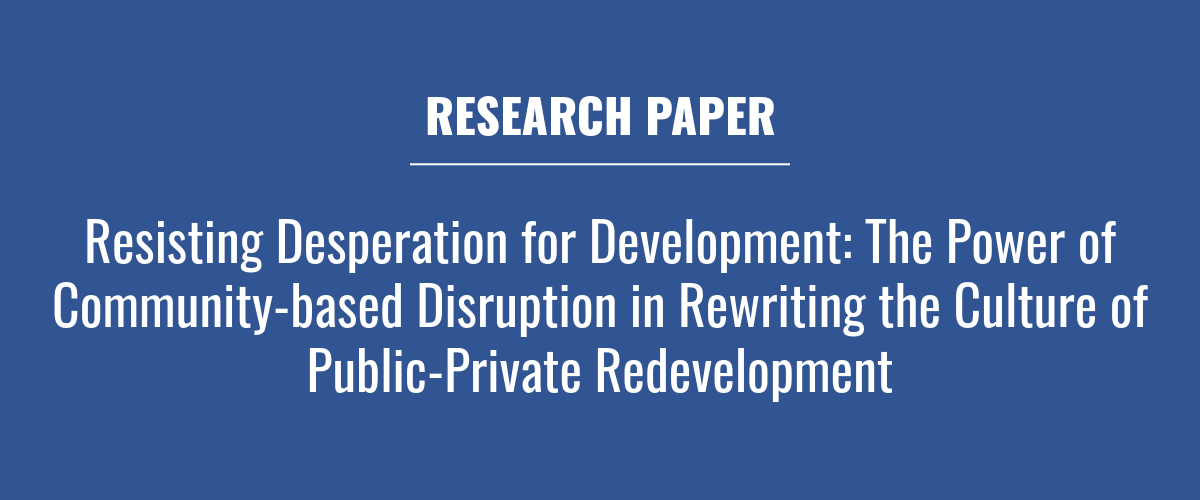
An Analysis on Urban Development Decisions and the Role of Community Resistance in Navy Hill
By Meghan Z. Gough, Associate Professor of Urban and Regional Studies and Planning at Virginia Commonwealth University, and Kathryn Howell, Executive Director of the National Center for Smart Growth and Associate Professor of Urban and Regional Studies and Planning at the University of Maryland
Before becoming the name of a controversial redevelopment project in 2017, Navy Hill was a thriving Black neighborhood just outside of downtown Richmond, Virginia (USA) into the early twentieth century. The focal point of the neighborhood after the Civil War was the Navy Hill School, a primary school and the first public school in Richmond to employ Black teachers (Richardson, 2007). A symbol of social advancement, in a neighborhood with growing visibility as a center for Black civil society, the Navy Hill School was known for its high caliber students. However, like many of Richmond’s Black neighborhoods Navy Hill was destroyed by government-funded renewal programs and interstate highway construction that made way for the Richmond Coliseum, government buildings and an expansion of the VCU Medical School, displacing families and making invisible the place history of Navy Hill.

Richmond Coliseum under construction, looking east at what was Navy Hill, 1970s. (Source: Valentine Museum)
Between 2017 and 2020, a fight over the redevelopment of Navy Hill, driven by a mix of community organizers, smart growth advocates, school board members and affordable housing advocates, would illuminate both the erasure and violence of the neighborhood’s destruction, as well as the city’s desperation for development. In this paper, we use Marcuse’s (2009) “exposing, proposing and politicizing” framework for critical reimagining the future of cities. We argue that organizers exposed the roots of the problem, including the neighborhood’s critical legacy of Black self-determination, as well as the racist destruction in the 1960s and 1970s. They used this to start a conversation about what is needed, and in doing so help to propose the necessary action, which included a community-based planning process and meaningful reparative action. Finally, they were able to effectively politicize the work using the history and proposed futures using direct action, political process and bureaucracy.
In the case of Navy Hill, mid-twentieth century history did not repeat itself; communities of resistance united to demand that city leaders pause and demonstrate how public-private, taxpayer subsidized redevelopment supports liberated reform that begins to reconcile racist planning history and promise more equitable services. Indeed, in 2020 just before the COVID-19 pandemic shutdown public spaces around the world, the Richmond City Council voted to not approve the deal, setting the stage for a new way of thinking about development and the city’s history.
